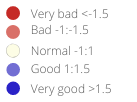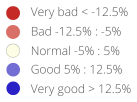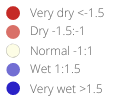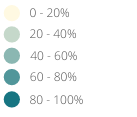Ethiopia
Assessments
May 2025
Towards the end of the Belg season (harvest starting in June), most areas in south western Ethiopia have received close to average rainfall so far and crop conditions are close to normal. Rainfall has been more irregular in time in central parts of the country (for example in Northern Shewa) and in the East (e.g. in Harerge), where seasonal rainfall deficits reach 40% as compared with average. Rangeland vegetation conditions also appear above average in most of the country with only localized areas below average in the south and eastern parts of the country. In early 2025 Ethiopia, experienced a good main season production with generally positive impact expected on food security. However, challenges such as ongoing conflict and the lingering effects of the 2021–2023 drought continue to drive high levels of vulnerability across the country. In Tigray, rising political tensions are raising concerns about potential humanitarian consequences (RELIEFWEB). The humanitarian response is already falling short of targets, further exacerbating the situation.
Hotspots Time Series
Assessment_graph
Country Summary
Statistics
Date
Agricultural cover
Number of administrative units classified as Warning (%)
Warnings and indicator graphs
Date
Cover

Date
Cover
WI_graph1
Date
Cover
WI_graph2
Date
Cover
Indicator
WI_graph3
Indicator temporal profile (ASAP units level 1)
Year
Cover
Indicator
Area
ASAP1 Units
Indicator maps
Main indicators at dekad
Last 6 dekads for indicator
Date
Indicator

Date
Indicator

Date
Indicator

Date
Indicator

Date
Indicator

Date
Indicator

Ancillary Information
Overview maps
Phenology
Layer

Season progress
Dekad

Agricultural area
Cover

Warning frequency map
Cover

ASAP units
Crop calendar and Production
Selection of FAO crop calendars matching with ASAP phenology
CCP_graph1
Agriculture statistics: ten crops with largest area
CCP_graph2
Agriculture statistics: ten crops with largest production
CCP_graph3
Share of national cereal production by subnational units
CCP_graph4





